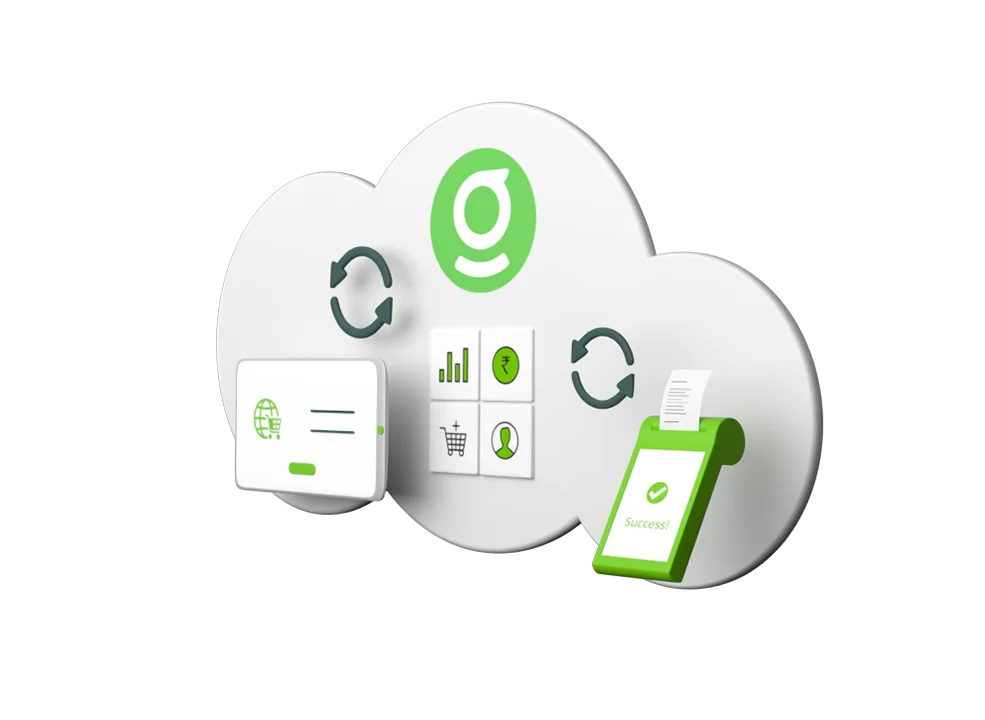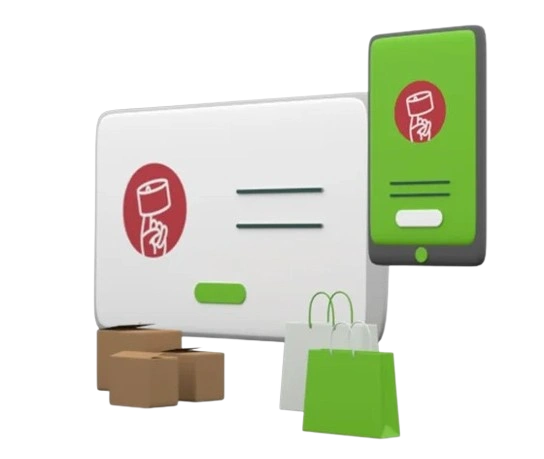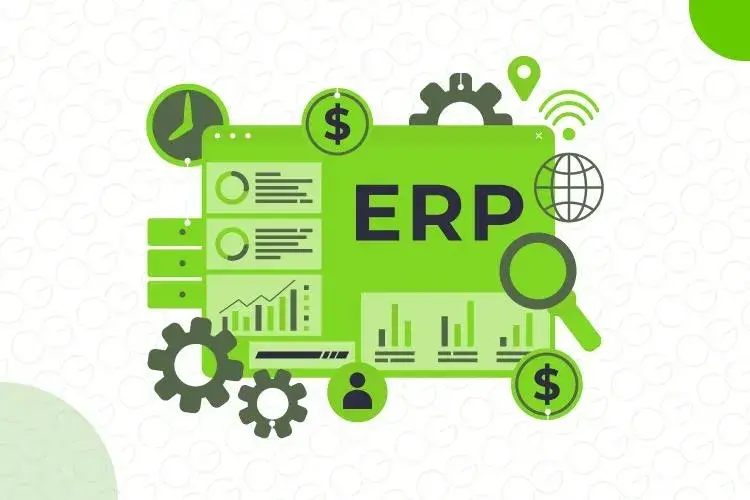Top 5 Things to Check When Choosing an ERP for a D2C Brand
If you’re running a D2C brand today, you’re likely not just selling through one storefront. You’re juggling your website, multiple marketplaces, maybe social commerce and, even a few pop-up stores or franchise counters if things are going well.
The modern consumer expects instant gratification. Without “in-stock now,” “same-day delivery,” “easy returns,” and transparent updates, you’re a click away from being out of sight and out of mind. Meanwhile, each click, order, and return happens in real time across multiple systems. Behind all this, your backend operations are either your strongest asset or your biggest problem.
A generic ERP is not built to keep up with D2C demands. Misaligned stock data, delayed fulfilment, or an incomplete view of customers can kill both margins and trust which is indispensable for D2C branding.
The wrong ERP can cause fragmented data, poor visibility, and fulfilment nightmares. The right ERP can be a brand-defining move.
Here are five factors every D2C founder, COO, or tech head should check before committing to an ERP.

Ready to automate fulfilment and returns for your D2C brand? See how Ginesys simplifies order routing, warehouse and reverse logistics.
1. One Source of Truth: Centralised Inventory and Multi-Channel Stock Control
Your inventory is the heart of your D2C business.
When your website shows a product available, but the warehouse says otherwise, you lose not just a sale, but also credibility. Your ERP must offer a single, real-time view of stock across all stock locations to your sales channels either directly via integrations or via an ecommerce order management system (OMS).
The right ERP maintains all stock locations from your multichannel warehouse to brick-and-mortar store inventory and transfer-locations in one unified system. So, when a customer sees “Available now” on your site, it truly is available.
Beyond a static stock count, the system must also handle live movements. It should account for:
- Inbound purchase receipts
- Inter-store transfers
- Returns coming back from customers
- Borrowings between nodes
- Shipments out
With this information, you gain meaningful replenishment insights such as which store is draining fastest, which SKU is overstocked in a remote warehouse, etc.
Why a single source of truth matters:
- Prevents overselling or underselling across channels
- Ensures accurate fulfilment promises to customers
- Reduces manual reconciliations between systems
Automated Fulfilment and Returns Management
In D2C, automation is survival. When orders spike, you can’t afford to manually allocate stock or trigger dispatches. Your OMS should automatically pick the best fulfilment location based on stock, proximity, and order priority, then push those updates to logistics and inventory instantly. If you are not using any OMS, you could be in trouble, for then this responsibility falls on the ERP.
Returns in D2C require serious attention. Your ERP or OMS should support return authorizations, channel attribution (did the return come via marketplace or direct?), inspection workflows (re-stock vs scrap), reverse logistics, and inventory updates.
Smart ERPs also track which channels are generating more returns, helping you fix product or listing issues faster.
2. Plug & Play Commerce: E-commerce Integration, CRM and Mobile Accessibility
A D2C ERP that can’t talk to your e-commerce ecosystem is like using a smartphone without internet access.
An ERP should either natively integrate with platforms like Shopify, WooCommerce, Magento, and major marketplaces such as Amazon, Flipkart, and Myntra but as this is too onerous to maintain, it is best to integrate with ready-to-use OMS. When orders flow in, the system should automatically update stock levels, track shipments, and sync financial entries, without a single CSV upload or manual sync. This not only removes operational errors but gives your team back hours every week to focus on growth instead of reconciliation.
CRM Connectivity and Unified Customer View
D2C success thrives on personalization. Your ERP must connect tightly with your CRM so that every order, return, and support ticket builds a unified customer story.
Imagine being able to see:
- How often a customer buys from you
- Which channels they use
- Their lifetime value and return frequency
With that data, your marketing team can segment smarter, and your support team can respond faster.
Mobile Accessibility for Teams on the Go
Your store manager, warehouse lead, or operations head shouldn’t need to be at a desk to take action. In a D2C setup where speed equals revenue, mobile accessibility makes decisions happen at the edge.
An ERP with strong mobile capabilities enables de-centralised decision-making and faster response times, empowering teams to:
- Check stock availability in real-time
- Approve transfers
- Track order fulfilment on the go
Your ERP must be designed for digital-first commerce, not a legacy manufacturing/wholesale system reworked to shoehorn D2C. The right platform facilitates the launch of new channels quickly, integrate new partners effortlessly, and operate without bottlenecks.

Launching quick-commerce, subscription or social-commerce models? See how Ginesys supports next-gen fulfilment with a comprehensive ERP.
3. Real-Time Finance, Supplier Management and Analytics
D2C brands operate on thin margins and high velocity. That makes real-time financial visibility a non-negotiable factor in selecting the right ERP.
Real-Time Finance Integration
Traditional ERPs often run batch updates, meaning you get yesterday’s numbers today. In D2C, that’s too late.
An ideal ERP should instantly connect sales, inventory, cost, and accounting.
The result?
- Live visibility into revenue, cost of goods, and gross margins
- Instant reconciliation across channels
- Accurate forecasting and better cash flow management
Supplier & Procurement Management
When you’re juggling multiple SKUs, product categories, or global vendors, supplier efficiency directly affects your delivery timelines.
Your ERP should help:
- Track purchase orders and expected deliveries
- Measure vendor performance (delays, defects, pricing trends)
- Forecast replenishment based on sell-through data
When you have this visibility, it is easier to move from reactive replenishment to predictive sourcing.
Analytics and Business Intelligence
Having data is one thing; being able to act on it is another. An ERP built for D2C gives you dashboards and drill-down capability:
- Which SKUs are ageing in inventory?
- Which channels deliver the greatest margin?
- Where are fulfilment lead times stretching?
- What is your return rate by channel or SKU?
These insights let you refine assortment, optimize fulfilment, reduce waste, and improve profitability. An ERP that only churns out static reports will fall short. Choose one where data can be sliced, in near-real time.
Because in D2C, intuition matters, but data wins.

4. Scalability, Data Security and Cloud-First Architecture
Today you’re managing 5,000 orders a month. Tomorrow it could be 50,000. You could expand to multiple geographies, channels, and fulfilment models. Your ERP must support that trajectory without re-engineering.
Scalability
Systems built for legacy wholesale may choke at high traffic volumes or complex fulfilment workflows. A D2C ERP must scale with your growth, whether that’s adding new SKUs, launching in new regions, or handling festive sale spikes.
Rigid, on-premises systems often need costly reworks or migrations when you expand. A scalable ERP grows with your brand without disrupting daily operations.
Data Security
You’re handling customer data, payment info, and supplier contracts. A data breach or compliance failure could undo years of brand equity.
Your ERP must comply with leading data protection frameworks, offer audit trails, and use robust cloud encryption. Check for certifications, access controls, and disaster recovery measures.
Cloud-First or Hybrid Flexibility
Cloud-first ERPs offer agility. They’re easier to deploy, update, and access, making them perfect for D2C brands with distributed teams and multiple fulfilment points. Moreover, cloud-based systems reduce infrastructure costs while providing real-time access to your remote workforce or franchise partners.
And when new trends emerge, such as social commerce, subscriptions, or quick commerce, you won’t need to start from scratch.
5. Vendor Ecosystem, Implementation & Total Cost of Ownership
Selecting the right ERP is as much about who delivers and how it’s implemented as it is about the features it offers.
Vendor Industry Expertise & Ecosystem
Before signing on, scrutinize the ERP vendor’s track record in the D2C / multi-channel space.
- Do they have successful implementations with brands that operate across direct-to-consumer websites, marketplaces, social-commerce, stores and warehouses?
- Are there published case studies, customer references, or industry-specific modules relevant to D2C?
Check whether the vendor maintains a partner ecosystem, comprising implementation consultants, integration experts, channel-specific add-ons. A framework that supports ongoing operations, not just the initial install, is crucial.

Facing high return volumes or multi-channel stock chaos? Learn how Ginesys’ order & warehouse modules manage stock across stores, web and marketplaces.
Implementation Timeline, Change-Management & Support
Implementation is frequently where ERP projects go off the rails, with delayed go-lives, budget overruns, poor user adoption, and messy data migration.
Evaluate the vendor’s implementation methodology, whether they use phased rollouts or go with a big-bang, the project team structure, the resources for change-management and training. Evaluate how data is migrated and what happens if you expand channels or geography mid-project.
Ask for:
- A defined timeline with milestones and resource commitments
- Clear roles for vendor, partner and your internal teams
- Training strategy and user-adoption metrics
- Support model post-go-live: how many hours, how many dedicated resources, how issues are tracked
Total Cost of Ownership (TCO) & Return on Investment (ROI)
Initial license or subscription cost is just the tip of the iceberg. As a D2C brand, you must understand the full lifetime cost of ownership and a timeline when you begin to see returns.
TCO for ERP typically includes:
- Software license or subscription fees
- Implementation costs (consulting, project management, data migration)
- Customization or configuration expenses (especially for D2C-specific workflows)
- Training and onboarding costs for users
- Integration costs (e-commerce platforms, marketplaces, CRM, logistics)
- Ongoing maintenance, support, upgrades
- Infrastructure or hosting (if not fully cloud)
For D2C brands, hidden costs may include adding connectors for new marketplaces, custom modules for social commerce or subscription fulfilment, handling rapid order peaks or returns volumes.
You should map:
- How long until you expect benefits (e.g., fewer stock-outs, faster fulfilment, fewer returns)
- What the cost savings or margin improvements are expected to be
- Whether the vendor offers transparent pricing for future modules or upgrades
Without this, you might choose what seems like a low-cost system now but end up paying much more as your operations scale.
Support Your D2C Brand with Ginesys’ Modern ERP Foundation
Ginesys One is a unified, cloud-native retail platform developed to support multichannel and omnichannel operations. It integrates a full stack of capabilities including ERP, POS, Order Management, Warehouse Management, Business Intelligence, and e-commerce integrations.
For D2C brands operating across e-commerce, marketplaces, and potentially stores or pop-ups, it’s crucial to find a foundational system that aligns with the demands of speed, visibility and operational consistency.
Unified Operations
Ginesys offers a single ERP backbone connecting your online and offline operations, from inventory visibility to order fulfilment to finance. You get real-time stock sync across stores, marketplaces, and warehouses.
Automation and Speed
With integrated order management and warehouse management systems, Ginesys automates order routing, picking, and dispatch workflows. That means faster fulfilment and fewer manual errors, even during flash sales.
Commerce-Ready Integrations
Ginesys One connects natively with Shopify, WooCommerce, Magento, and major marketplaces plus your logistics and CRM tools. Orders, payments, and returns sync automatically, keeping your business running smoothly.
Financial Control & Business Intelligence
Its finance module and built-in analytics dashboards let you monitor margins, cash flow, and channel performance in real time. With a cloud-based architecture, Ginesys ensures scalability and faster ROI without heavy IT overhead.

Planning to scale SKUs, warehouses or geographies? Make sure your ERP scales too. See how Ginesys One does it without heavy IT lift.
Your ERP is the Engine Behind Every D2C Success
To recap, choosing the right ERP boils down to five pillars:
- Centralised inventory
- OMS integrations out of the box
- Plug-and-play multi-OMS and CRM integration
- Real-time finance and supplier visibility
- Scalable, secure, cloud-first architecture
- A proven D2C-ready ecosystem like Ginesys One
Think of your ERP not as a backend tool but as your growth operating system. Before making a decision, benchmark ERP platforms against real-world D2C scenarios:
- Can it handle a surge during your festive sale?
- Does it simplify reverse logistics when returns double?
- Can it onboard a new marketplace in days, not months?
The right ERP makes all that possible. For forward-thinking D2C brands, now is the time to build that foundation.
Anchor your brand’s growth to a system built for today’s omnichannel demands. See how Ginesys One unifies inventory control, commerce integration, and real-time finance for scalable D2C operations.
FAQs
1. Why do D2C brands need a dedicated ERP instead of a traditional one?
Because traditional ERPs are designed for manufacturers or wholesalers, not digital-first brands. D2C ERPs are built to sync real-time orders, manage multi-channel inventory, and support faster fulfilment.
2. How can an ERP help with high return rates and reverse logistics?
A modern ERP automates return approvals, tracks reasons, restocks or scraps items, and updates inventory instantly, reducing losses and customer frustration.
3. Which integrations are most critical for D2C brands?
APIs or plug-ins for platforms like Shopify, WooCommerce, Magento, and marketplaces (Amazon, Flipkart), plus logistics and CRM systems.
4. What analytics should decision-makers look for?
Dashboards showing channel performance, return rates, fulfilment time, margins, and ageing stock, all updated in real time.
5. What security and compliance standards should a D2C ERP adhere to?
Look for ERPs with secure cloud infrastructure, role-based access, encryption, and compliance with data protection standards like ISO or GDPR.

